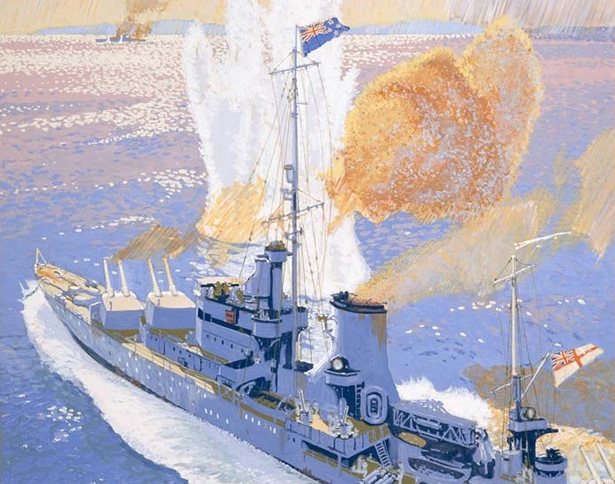
When the cruiser HMS Achilles opened fire on the German ‘pocket battleship’ Admiral Graf Spee in the South Atlantic at 6.21 a.m. on 13 December 1939, it became the first New Zealand unit to strike a blow at the enemy in the Second World War. With the New Zealand ensign flying proudly from its mainmast – as battle loomed, a signalman had run aft with the ensign shouting ‘Make way for the Digger flag!’ – Achilles also became the first New Zealand warship to take part in a naval battle.
The 82-minute engagement between the Graf Spee and its three smaller British opponents – Achilles, Ajax and Exeter – was inconclusive. All four vessels were damaged, with the British ships suffering 72 fatalities (including two New Zealanders) to the Graf Spee's 36. But the German warship’s subsequent withdrawal to the neutral Uruguayan port of Montevideo, and its dramatic scuttling by its own crew on 17 December, turned the Battle of the River Plate into a major British victory – and a welcome morale boost for the Allied cause during the ‘Phoney War’ that followed the fall of Poland.
Achilles’ role in the battle was a special source of pride for New Zealanders, who welcomed the ship’s crew home at huge parades in Auckland and Wellington in early 1940.
Related booklet
The text and some of the images from this web feature have been made into a booklet for the naval museum in Montevideo. You can download this as a pdf document in English and Spanish:


